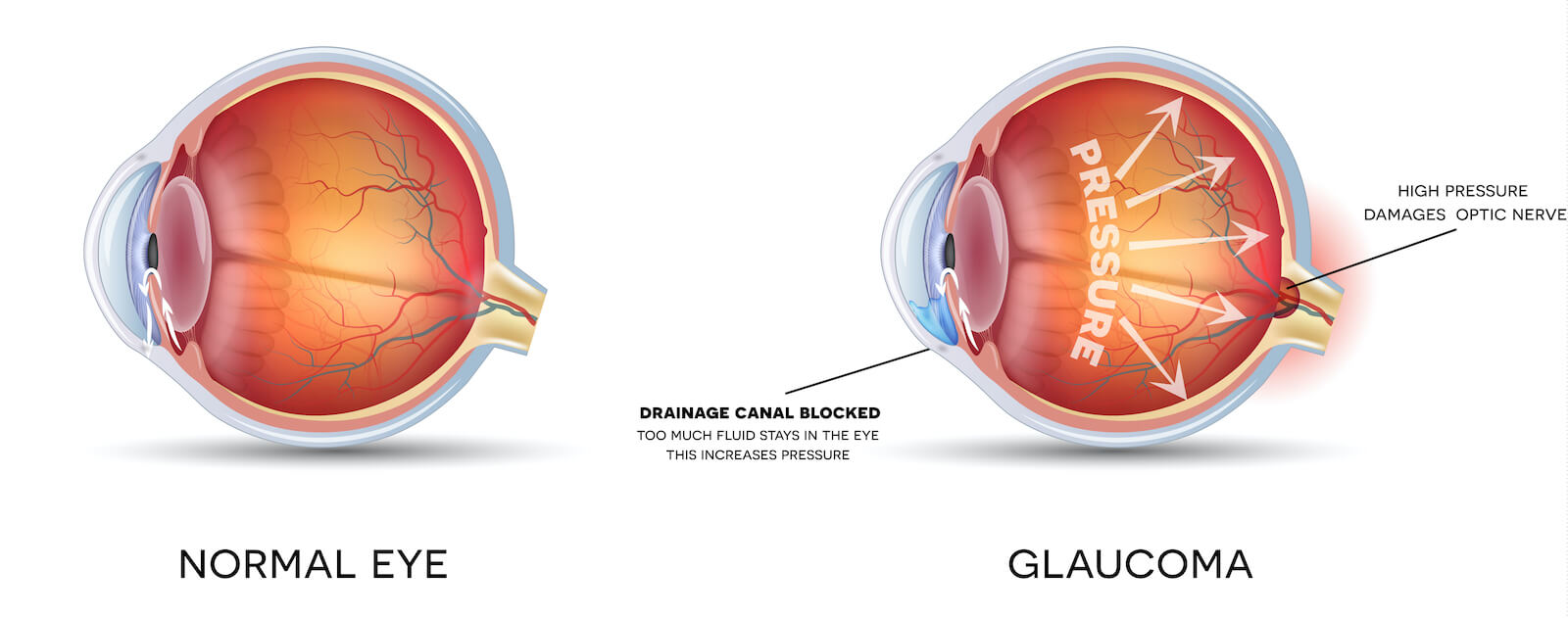Glaucoma
Early Detection

Glaucoma is one of the leading causes of blindness in the U.S., particularly for elderly patients. It is important to know that the loss of sight could frequently be avoided by early detection and treatment.
Anyone having symptoms or risk factors for glaucoma such as diabetes, a family history of glaucoma, or those of African descent should be examined by an eye doctor. Adults with no signs or risk factors should be screened when nearing age 40, as that is the time when early disease process appears. The eye doctor will determine the frequency of follow up examinations based on the findings of the examination.
What is Glaucoma?
It is a disease of the optic nerve, the fibrous cable that transmits the images that we see to our brain. When the optic nerve is damaged, blind spots develop. These visual defects can go undetected until there is extensive harm, and by then it is often too late. Destruction of the nerve from the disease process will result in permanent blindness.
The most important risk factors for glaucoma are:
- Age
- Elevated eye pressure
- Family history of glaucoma
- African or Hispanic ancestry
- High degrees of farsightedness or nearsightedness
- Past eye injuries
- Thinner central corneal thickness
- Systemic health problems, including diabetes, migraine headaches, and poor circulation
- Pre-existing thinning of the optic nerve

Diagnosing Glaucoma
Early diagnosis and treatment are essential in preventing damage to the optic nerve that could result in blindness. It is important that a baseline of information be established. When evaluating a patient for glaucoma, the eye doctor will look closely at the pressure in the eye, the health of the optic nerve, and the visual field of the patient. Other procedures may be requested to complete the evaluation (i.e., optic nerve photographs, visual field test, optical coherence tomography [OCT] of the nerve fiber).
How does intraocular pressure affect the optic nerve?
When the drainage angle becomes blocked, the pressure inside the eye increases. This increase in intraocular pressure can result in damage to the optic nerve. It is critical that treatment is started to reduce pressure and subsequently slow or stop the progression of glaucoma. This is the primary method used to reduce the likelihood of vision loss.
What treatments are available for patients with glaucoma?
The BEST way to prevent vision loss is to be diagnosed early and examined regularly, as damage from glaucoma is permanent.
Eye drops, laser treatment, and surgical procedures can be used to lower eye pressure and reduce the potential for further damage. In some cases, oral medications may be prescribed. It is important that the eye doctor and patient work closely together in an effort to halt the progression of the disease. It is critical that patients undergoing treatment for glaucoma use medications as prescribed and keep their eye appointments. It is a lifelong program. Lack of compliance could result in permanent vision loss.



